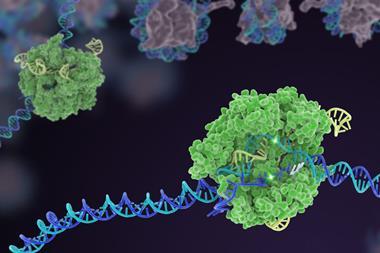
A new $70 million (£56 million) project, co-led by several prominent scientists including University of California, Berkeley biochemist Jennifer Doudna – who shared the 2020 Nobel Prize in chemistry for her work on Crispr gene-editing – will apply precision genome editing to microbiomes to develop a new technique for addressing various human health and climate problems.
‘We are bringing together these two breakthrough technologies – metagenomics and Crispr – to create a brand new field of science called precision microbiome editing,’ Doudna explained in a talk announcing the project at a TED conference in Vancouver, British Columbia on 17 April. ‘This will allow us to discover links between dysfunctional microbiomes and disease or greenhouse gas emissions.’ Metagenomics is the study of all the genomes found in an environmental sample.
The hope is that this technology will eventually allow scientists to develop modified and improved microbiome editors, demonstrate that they are safe and effective and then begin deploying these optimised solutions in transformative ways to solve real-world problems, she said.
The project represents the largest scientific award ever supported through TED’s Audacious Project. The initiative at Berkeley’s Innovative Genomics Institute will be led by Doudna together with earth and materials scientist Jill Banfield. Banfield first introduced Doudna to Crispr systems in bacteria back in 2006.
In a statement on the new project, Banfield likened Crispr to ‘a tool that can rewrite the manuals’ to fundamentally change how organisms work. ‘Genome-resolved metagenomics is the way we can read the instruction manual for any organism and it has brought to light tens of thousands of organisms that we didn’t even know existed,’ she explained.
Researchers have traditionally studied microorganisms individually. But they often live in communities, or microbiomes, in the environment, as well as on and inside animals. Research has shown that dysfunctional microbiomes in humans can be linked to health problems like asthma, allergies and obesity.
‘Our team has identified a promising link between a molecule produced in the gut microbiome and asthma development,’ Dounda noted. ‘With precision microbiome editing, we could offer a child at risk for asthma a non-invasive therapy that would eliminate asthma-inducing molecules, changing their life,’ she continued. In the future, these same approaches could help to treat or even prevent diseases that are associated with the gut microbiome, Doudna added.
Beyond its health applications, this new technological approach can also help fight climate change since microbiomes are a substantial source of greenhouse gas emissions. For example, microbes from livestock, agricultural soils and landfills emit methane and nitrous oxide.
Doudna noted that specific microbiome compositions in livestock can reduce methane emissions by up to 80%. Research has shown, for instance, that feeding cattle a certain type of red seaweed decreases the expression of methane-producing genes in some microbes in the animal’s gut. Such activities, however, require daily and expensive interventions that just don’t scale.
But precision microbiome editing offers an opportunity to, for example, modify a calf’s microbiome at birth and thereby limit its impact on the climate throughout its entire lifetime. Such an outcome would not only benefit the environment, but farmers as well because reduced methane production means more efficient conversion of feed into food. ‘Ultimately, microbiomes generate up to two-thirds of all the methane emissions globally, so our technology could really move the needle in our fight against climate change,’ Doudna said.

















No comments yet